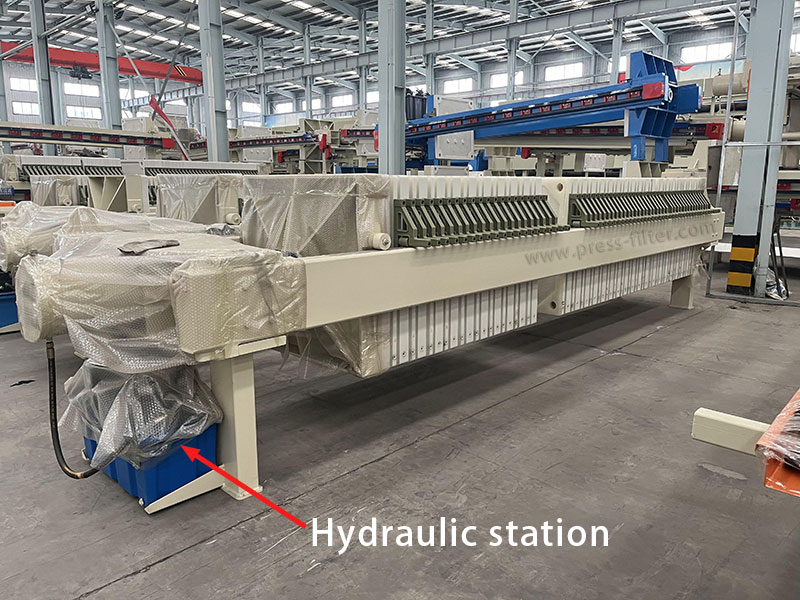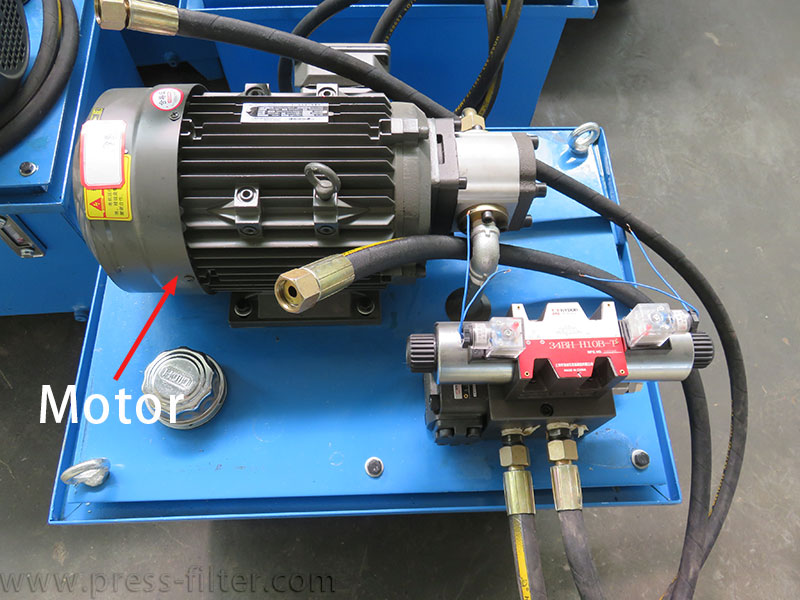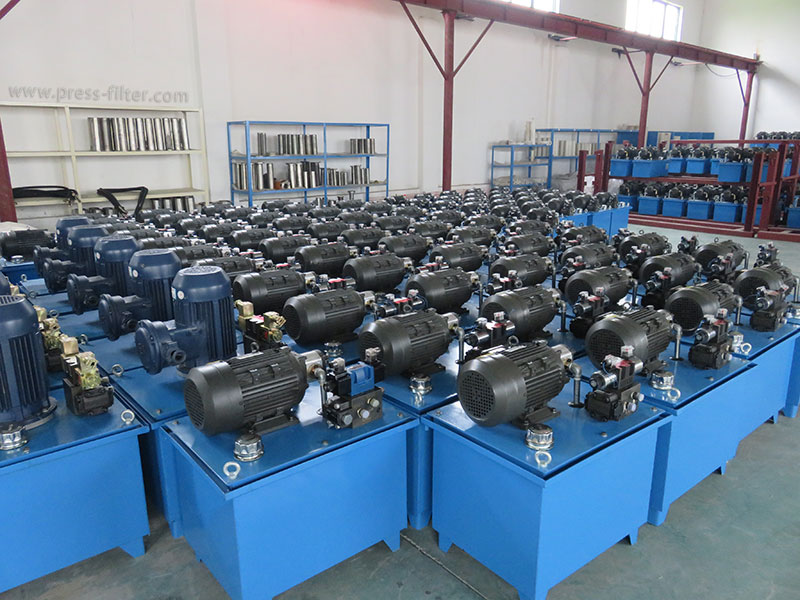What Accessories Does the Hydraulic Station Have?
The hydraulic station is a device that converts mechanical energy into hydraulic energy or hydraulic energy into mechanical energy. It is the power device for the filter press to complete automatic compaction, automatic pressure maintenance, and automatic release. The hydraulic station plays a very important role in the filter press. Specifically, the hydraulic station provides hydraulic energy through a hydraulic pump, the hydraulic valve controls the flow direction and pressure of the hydraulic fluid, and the hydraulic cylinder or other actuator converts the hydraulic energy into mechanical energy to realize the automated operation of the filter press. This article will introduce the accessories the hydraulic station has.

Main Accessories of Hydraulic Station
The hydraulic station is mainly composed of a hydraulic pump, motor, fuel tank, directional valve, throttle valve, relief valve, and other accessories.
- Motor: The motor is the driving force source of the hydraulic station system, providing the required power for the hydraulic system. The rotation of the motor drives the operation of the hydraulic pump, generating hydraulic energy so that liquid can flow into the system.
- Hydraulic pump: The hydraulic pump is responsible for sucking liquid from the tank and pushing it to the hydraulic cylinder of the filter press, creating the required pressure. There are many types of hydraulic pumps, and the choice depends on the application needs.
- Relief Valve: A relief valve is a safety device used to control pressure in a hydraulic system. When the system pressure reaches the set value, the relief valve opens to guide excess liquid back to the tank to avoid system overpressure. This is important to protect the hydraulic system and accessories from damage or accidents.
- Directional Valves: Directional valves are used to control the direction of flow in hydraulic systems. During the automatic filtration process, the directional valve will control the flow of liquid to the hydraulic cylinder to realize the functions of automatic compression, pressure maintenance, and release. Different reversing valve positions and control methods allow the hydraulic cylinder to adjust pressure at different stages.
- Oil tank: The oil tank is a container for storing hydraulic oil, also called a hydraulic oil tank. Hydraulic systems work by sucking hydraulic oil from a tank and pushing it into hydraulic pumps and hydraulic cylinders. The oil tank also helps cool and filter the hydraulic oil to keep the system running properly.

Maintenance of the Hydraulic Station
- Check the hydraulic oil regularly: Make sure the quality and level of the hydraulic oil are in proper condition. Regularly changing hydraulic oil prevents impurities and moisture in the oil from causing damage to the system and helps maintain system performance.
- Clean the oil tank: Clean the oil tank regularly to remove sediment, impurities, and dirt and keep the hydraulic system clean.
- Check hydraulic pipelines and connectors: Regularly check hydraulic pipelines and connectors for oil leakage or damage, and repair or replace damaged parts in a timely manner to ensure the sealing and safety of the hydraulic system.
- Calibrate pressure and flow: Calibrate pressure and flow gauges in hydraulic systems regularly to ensure their accuracy and reliability. This helps keep the system up and running and improves monitoring and control of system performance.
- Pay attention to temperature and vibration: Regularly monitor the operating temperature and vibration of the hydraulic station. Excessive temperature and vibration may affect the stability and life of the system, and timely measures need to be taken to adjust or repair it.
- Maintenance records: record the maintenance and upkeep of the hydraulic station, including replacing hydraulic oil, cleaning filters, repairing and replacing parts, etc., so as to track the operating status and historical maintenance status of the system in a timely manner.


